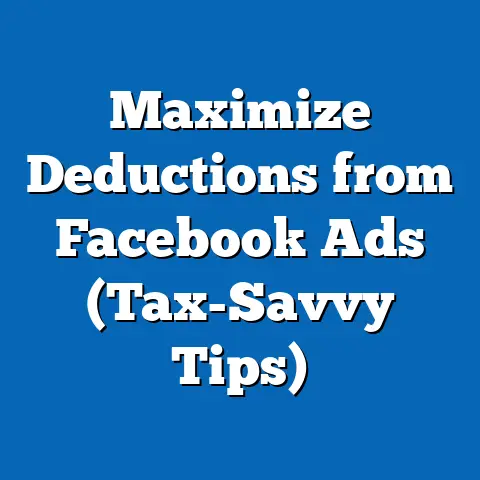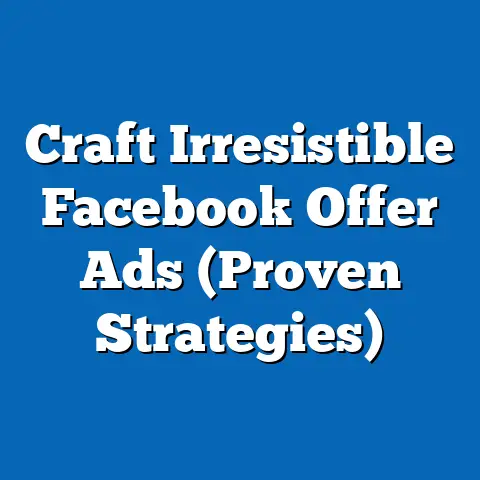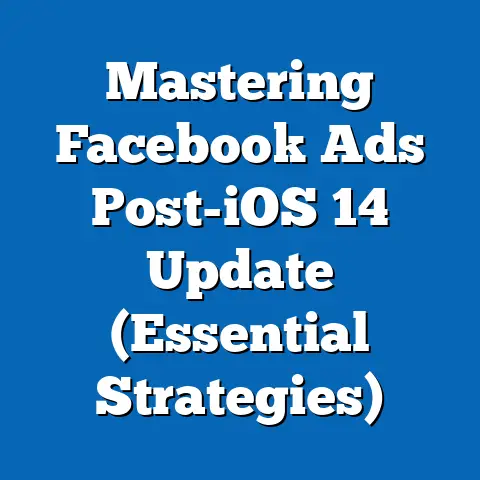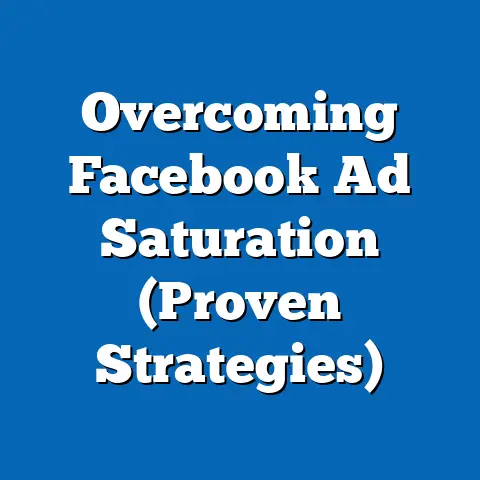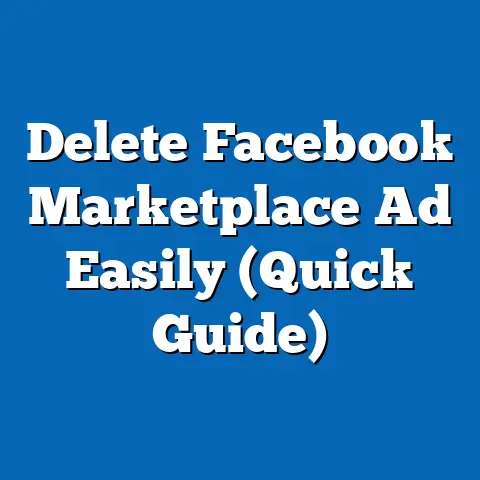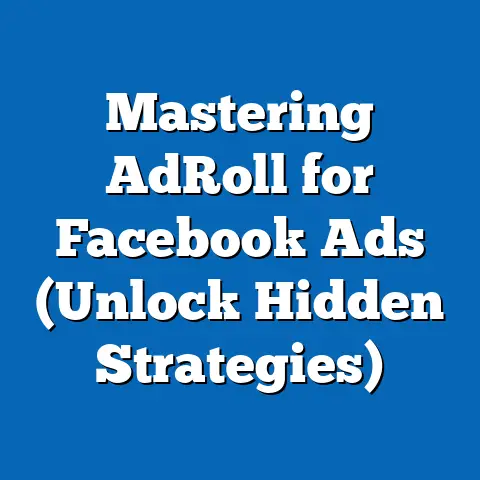Maximize Sales with Amazon, Google & Facebook Ads (Pro Strategies)
In the ever-evolving landscape of digital marketing, few platforms dominate the space as powerfully as Amazon, Google, and Facebook. These giants have reshaped how businesses connect with consumers, offering unprecedented opportunities to target, engage, and convert audiences at scale. What sets these platforms apart is not just their massive user bases—Amazon with over 300 million active customers, Google processing over 8.5 billion searches daily, and Facebook (Meta) boasting nearly 3 billion monthly active users—but their sophisticated algorithms, data-driven targeting capabilities, and unique advertising ecosystems.
The uniqueness of advertising on these platforms lies in their ability to cater to distinct stages of the consumer journey. Amazon excels in capturing high-intent buyers at the point of purchase, Google dominates in search and discovery, and Facebook thrives in building brand awareness and fostering engagement through social interaction. Together, they form a powerful trifecta for businesses aiming to maximize sales in a competitive digital marketplace.
The historical context of Amazon’s advertising success is tied to the broader rise of e-commerce. As online shopping became mainstream—accelerated by events like the dot-com boom and the COVID-19 pandemic—Amazon positioned itself as the go-to platform for product discovery and purchase. Its advertising model leverages first-party data from user searches and purchases, offering unparalleled precision in reaching consumers who are ready to buy.
Google: Pioneering Search and Digital Reach
Google’s dominance in digital advertising began with the launch of AdWords in 2000, a pay-per-click (PPC) model that revolutionized how businesses reached audiences through search. With the internet becoming the primary source of information in the late 1990s and early 2000s, Google capitalized on the growing demand for targeted advertising tied to user intent. Today, Google Ads generates over $224 billion annually (2022 figures), encompassing search, display, YouTube, and more.
The historical backdrop of Google’s rise includes the rapid digitization of information and the increasing reliance on search engines as gatekeepers of knowledge. Significant events like the 2008 financial crisis pushed businesses to seek cost-effective marketing solutions, further cementing Google’s role as a leader in performance-based advertising.
Facebook: Social Media as a Marketing Powerhouse
Facebook, launched in 2004, transformed social networking into a marketing goldmine with the introduction of its advertising platform in 2007. Initially focused on simple banner ads, Facebook Ads evolved into a sophisticated system leveraging user data for hyper-targeted campaigns. By 2022, Meta’s ad revenue reached $113 billion, driven by its vast user base and advanced algorithms.
The societal shift toward social media in the 2000s, coupled with the smartphone revolution, created fertile ground for Facebook’s advertising model. Events like the 2016 U.S. presidential election highlighted both the power and controversy of social media advertising, as issues of data privacy and misinformation came to the forefront. Despite these challenges, Facebook remains a cornerstone of digital marketing, particularly for brand-building and community engagement.
Defining Characteristics of Advertising on Amazon, Google, and Facebook
Amazon Ads: Capturing High-Intent Buyers
Amazon’s advertising platform is uniquely positioned to target consumers at the bottom of the sales funnel. Sponsored Products, Sponsored Brands, and Sponsored Display ads allow businesses to place their offerings directly in front of shoppers actively searching for products. According to a 2023 study by Jungle Scout, 74% of U.S. consumers start their product searches on Amazon, surpassing even Google.
Key characteristics include Amazon’s reliance on keyword-driven targeting and its focus on conversion metrics like Advertising Cost of Sales (ACoS). Unlike other platforms, Amazon’s ecosystem is closed, meaning ads are tied directly to product listings within its marketplace. This creates a seamless path from ad to purchase, making it ideal for e-commerce businesses but less effective for broader brand awareness.
Google Ads: Mastering Search and Beyond
Google Ads stands out for its versatility and reach, spanning search, display, video (YouTube), and app-based advertising. Its defining feature is the ability to capture user intent through search queries, with businesses bidding on keywords to appear at the top of results pages. A 2022 report by Statista notes that Google holds a 92% share of the global search engine market, underscoring its dominance.
Google’s platform also offers advanced tools like responsive ads, Smart Bidding, and audience targeting based on demographics and interests. This adaptability makes it suitable for businesses at all stages of the funnel, from awareness to conversion. However, the complexity of managing campaigns and rising cost-per-click (CPC) rates can pose challenges for smaller advertisers.
Facebook Ads: Social Engagement and Precision Targeting
Facebook Ads (now under Meta) is defined by its social nature and unparalleled targeting capabilities. With access to detailed user data—ranging from interests and behaviors to life events—Facebook allows advertisers to create highly personalized campaigns. A 2023 Hootsuite report indicates that 78% of consumers have discovered products on Facebook, highlighting its role in the awareness stage.
Key features include dynamic ads, lookalike audiences, and integration with Instagram, which extends its reach to visually driven demographics. While Facebook excels in engagement and retargeting, its effectiveness for direct conversions can vary depending on the industry and audience. Additionally, recent changes like Apple’s iOS 14.5 update have impacted tracking capabilities, forcing advertisers to adapt.
Pro Strategies for Maximizing Sales Across Platforms
Amazon Ads: Optimizing for Conversion
-
Keyword Research and Optimization: Use tools like Amazon’s Search Term Report to identify high-performing keywords and negative keywords to reduce wasted spend. Focus on long-tail keywords that match specific user intent, as they often have lower competition and higher conversion rates. For instance, “organic dog food for puppies” is more targeted than “dog food.”
-
Product Listing Optimization: Ensure product titles, descriptions, and images are optimized before running ads. A 2022 study by Feedvisor found that listings with high-quality images and detailed bullet points see a 20% higher click-through rate (CTR). Ads drive traffic, but conversions depend on the listing’s quality.
-
Leverage Sponsored Brands and Display Ads: While Sponsored Products are ideal for immediate sales, Sponsored Brands build awareness by showcasing multiple products or a store page. Display ads, which appear on and off Amazon, can retarget users who viewed your products, increasing overall reach.
-
Monitor ACoS and Adjust Bids: Maintain a target ACoS by regularly adjusting bids based on performance data. For high-margin products, a higher ACoS may be acceptable, while low-margin items require tighter control. Automation tools like Amazon’s Dynamic Bidding can help optimize in real-time.
Google Ads: Balancing Reach and Efficiency
-
Focus on Quality Score: Google’s Quality Score impacts ad rank and CPC. Optimize ad copy, landing pages, and keyword relevance to improve scores. A high Quality Score can reduce costs by up to 50%, according to a 2023 WordStream report.
-
Utilize Smart Bidding: Google’s AI-driven bidding strategies, such as Maximize Conversions or Target CPA, can improve campaign performance by adjusting bids based on historical data and user behavior. Test different strategies to find the best fit for your goals.
-
Expand Beyond Search: Incorporate Display and YouTube ads to reach users at earlier stages of the funnel. Video ads on YouTube, for instance, have a 27% higher view rate when paired with search campaigns, per a 2022 Google study. Use remarketing lists to re-engage users who didn’t convert initially.
-
Geo-Targeting and Scheduling: Tailor campaigns to specific locations and times of day when your audience is most active. For local businesses, radius targeting can drive foot traffic, while dayparting ensures ads run during peak hours, maximizing ROI.
Facebook Ads: Building Relationships and Retargeting
-
Create Compelling Visuals: Since Facebook is a visual platform, invest in high-quality images and videos. A 2023 Sprout Social report found that ads with video content generate 59% more engagement than static images. Test carousel ads to showcase multiple products or features.
-
Leverage Lookalike Audiences: Use existing customer data to create lookalike audiences, which target users similar to your best customers. This strategy often yields a 2-3x higher conversion rate compared to broad targeting, according to Meta’s internal data.
-
Implement Retargeting Campaigns: Retarget users who visited your website or engaged with your content using the Facebook Pixel or Custom Audiences. Dynamic Product Ads (DPA) automatically show relevant products to past visitors, boosting conversion rates by up to 34%, per a 2022 Shopify study.
-
Test and Iterate: A/B test ad copy, visuals, and audience segments to identify what resonates most. Allocate budget to top-performing ads and scale gradually. Facebook’s algorithm rewards consistent testing, often lowering costs for well-optimized campaigns.
Cross-Platform Synergy: Integrating Strategies for Maximum Impact
While each platform has unique strengths, integrating campaigns across Amazon, Google, and Facebook can amplify results. For example, use Facebook to build awareness and drive traffic to your website, Google to capture search intent, and Amazon to close sales with high-intent buyers. A 2023 eMarketer report found that businesses using a multi-platform approach see a 25% higher ROI compared to single-platform strategies.
Ensure consistent branding and messaging across platforms to reinforce recognition. Use UTM parameters to track performance and allocate budgets based on attribution data. Cross-platform retargeting—such as showing Amazon ads to users who clicked a Google ad—can further enhance conversion rates.
Societal Implications: The Impact of Digital Advertising
Economic Impacts: Empowering Businesses and Driving Competition
The rise of Amazon, Google, and Facebook Ads has democratized marketing, allowing small businesses to compete with larger corporations through affordable, targeted campaigns. Amazon’s marketplace, for instance, supports over 1.9 million small and medium-sized businesses (SMBs) globally, per a 2023 Amazon report. Similarly, Google’s Local Services Ads help local providers gain visibility without massive budgets.
However, the dominance of these platforms also raises concerns about market concentration. Rising ad costs—Google’s average CPC increased by 10% from 2021 to 2023—can strain SMBs, while larger players with bigger budgets often dominate ad auctions. This creates an uneven playing field, prompting calls for regulatory oversight.
Cultural Shifts: Changing Consumer Behavior
Digital advertising has reshaped how consumers discover and interact with products. Amazon’s focus on convenience has fueled a “buy now” culture, with 58% of U.S. consumers making impulse purchases on the platform, according to a 2022 Slickdeals survey. Google’s search ads influence decision-making by prioritizing paid results, while Facebook’s social ads blur the line between content and promotion, impacting trust.
These shifts also reflect generational differences. Millennials and Gen Z, who grew up with digital technology, are more receptive to social media ads, with 71% following brands on platforms like Instagram, per a 2023 Pew Research study. In contrast, older generations like Baby Boomers often rely on Google search for information, highlighting the need for tailored strategies.
Technological and Privacy Concerns
The technological advancements behind these platforms—AI, machine learning, and big data—enable precise targeting but also raise ethical questions. Facebook’s Cambridge Analytica scandal in 2018 exposed the risks of data misuse, while Apple’s App Tracking Transparency (ATT) framework in 2021 reduced tracking capabilities, costing Meta an estimated $10 billion in ad revenue.
Consumers are increasingly aware of privacy issues, with 81% expressing concern over data collection, according to a 2023 Cisco survey. This has led to a push for transparency and regulations like the EU’s General Data Protection Regulation (GDPR). Advertisers must balance effectiveness with ethical practices, adopting privacy-first strategies like contextual targeting.
Workplace Implications: Evolving Skill Sets and Roles
The complexity of managing Amazon, Google, and Facebook Ads has created demand for specialized roles like digital marketing analysts and PPC specialists. A 2023 LinkedIn report notes a 30% increase in job postings for digital advertising professionals since 2020. Businesses must invest in training or outsourcing to stay competitive.
Additionally, the automation of ad platforms—such as Google’s Smart Bidding or Amazon’s campaign optimization tools—reduces manual workload but requires oversight to avoid overspending or misaligned targeting. This shift underscores the need for hybrid skills combining creativity, data analysis, and technical expertise.
Comparing Platform Effectiveness: Strengths, Weaknesses, and Nuances
While Amazon, Google, and Facebook each offer unique advantages, their effectiveness varies based on business goals, industry, and audience. Amazon excels in e-commerce with a 40% average conversion rate for Sponsored Products, per a 2023 Jungle Scout report, but its scope is limited to product sales. Google offers broader reach and intent-based targeting, though its 2-3% average CTR for search ads (per WordStream) reflects higher competition and cost.
Facebook, with a 9.2% average CTR for ads (Hootsuite 2023), is ideal for engagement and awareness but often requires longer nurturing to drive sales. Industries like fashion or beauty thrive on Facebook due to visual appeal, while B2B sectors may find Google’s search ads more effective for lead generation.
Nuances within audiences also matter. Younger demographics engage more on Facebook and Instagram, while Amazon’s user base skews toward practical, purchase-driven consumers across age groups. Businesses must analyze customer data to allocate budgets effectively, avoiding a one-size-fits-all approach.
Forward-Looking Insights: The Future of Digital Advertising
Second, privacy regulations will intensify, forcing platforms to pivot toward first-party data and contextual advertising. Google’s planned phase-out of third-party cookies by 2024 exemplifies this shift, though its impact remains uncertain. Businesses must prepare for reduced tracking capabilities by building direct customer relationships through email lists or loyalty programs.
Third, the rise of emerging platforms like TikTok, which saw a 50% increase in ad revenue in 2022 (eMarketer), could challenge the dominance of the big three. While Amazon, Google, and Facebook remain leaders, diversification will be key to reaching younger audiences on trending channels.
Finally, economic uncertainties like inflation or recession could influence ad spend. A 2023 McKinsey survey predicts that 60% of businesses plan to maintain or increase digital ad budgets despite economic challenges, prioritizing measurable ROI. This suggests sustained growth for performance-driven platforms like Amazon and Google.
Conclusion: Navigating the Digital Advertising Landscape
Maximizing sales with Amazon, Google, and Facebook Ads requires a deep understanding of each platform’s unique strengths, historical context, and strategic nuances. Amazon’s focus on high-intent buyers, Google’s mastery of search and reach, and Facebook’s social engagement capabilities offer complementary opportunities for businesses to connect with consumers across the sales funnel. By adopting pro strategies—such as keyword optimization, audience targeting, and cross-platform integration—advertisers can achieve significant results, as evidenced by data showing multi-platform campaigns outperforming single-channel efforts.
However, the societal implications of digital advertising cannot be overlooked. Economic disparities, cultural shifts, privacy concerns, and workplace changes highlight the broader impact of these platforms on our world. As technology and regulations evolve, businesses must adapt to maintain effectiveness while addressing ethical considerations.
Looking ahead, the digital advertising landscape will continue to transform, driven by AI, privacy shifts, and emerging competitors. While uncertainties remain, one thing is clear: mastering Amazon, Google, and Facebook Ads today positions businesses for success in tomorrow’s marketplace. By staying agile, data-driven, and customer-focused, advertisers can navigate this dynamic environment and unlock sustainable growth.

